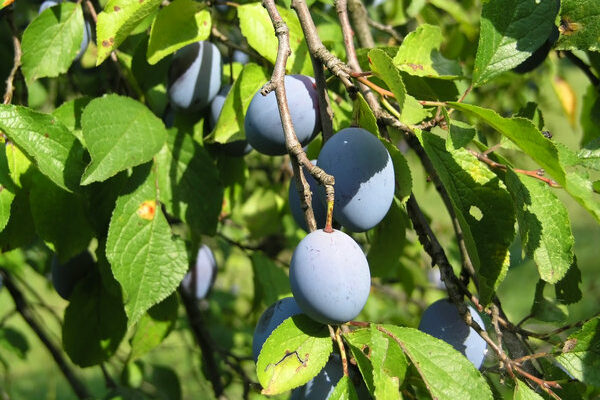European plums, often referred to as dessert plums or Prunus domestica, are a popular variety known for their sweet flavor, smooth skin, and versatility in culinary applications. When selecting European plums, it’s important to consider factors like appearance, texture, ripeness, and freshness to ensure you’re getting the best quality fruit. Here’s a comprehensive buyer’s guide to help you choose the perfect European plums:
- Color and Appearance: European plums come in various colors, including purple, red, blue, and green. Choose plums with a consistent color and smooth skin. The skin should be free from blemishes, cuts, or wrinkled spots.
- Size and Shape: European plums typically have an oval or slightly elongated shape. Look for plums that have a uniform size and shape.
- Texture: Gently press the plum near the stem end. A ripe European plum should give slightly to gentle pressure, indicating that it’s ready to eat. Avoid plums that are too hard or too soft, as they might be underripe or overripe.
- Ripeness: Ripe European plums should have a slightly soft texture and a vibrant color. Check for plums that yield a little when pressed near the stem end. This indicates that the fruit is at its peak ripeness.
- Aroma: While European plums might not have a strong aroma, if you detect a sweet, fruity scent at the stem end, it’s a good sign that the plum is ripe and ready to eat.
- Seasonality: European plums are typically in season during the late summer and early fall months, depending on your region.
- Local and Fresh Options: Whenever possible, choose locally grown European plums to ensure freshness and support local farmers. Farmers markets or specialty stores are good places to find the freshest and highest-quality plums.
- Bruising and Damage: Avoid plums with visible bruises, cuts, or soft spots, as these can indicate internal damage and affect the overall quality of the fruit.
- Stem and Skin: Plums with green stems are fresher. Avoid plums with dried, shriveled, or broken stems. The skin should be smooth and unblemished, as this is an indicator of good quality.
- Culinary Uses: European plums are excellent for eating fresh, baking, making jams, and preserving. Consider the intended use of the plums when selecting them. For baking or cooking, slightly firmer plums might be preferable.
- Storage and Ripening: If your European plums are slightly underripe, you can leave them at room temperature to ripen over a couple of days. Once they are ripe, store them in the refrigerator to extend their shelf life. Use a breathable container or a plastic bag with holes to prevent moisture buildup.
By keeping these factors in mind, you’ll be well-equipped to select the best European plums for your culinary endeavors. Whether you enjoy them fresh, incorporate them into recipes, or preserve their sweet flavor for later use, European plums can add a delightful touch to your meals and snacks.
